Spicy Stir-Fried Chicken Cubes, or Bào Chǎo Jī Kuài, is a dish that embodies the boldness and vibrancy of Chinese cuisine. A staple in households and restaurants alike, this dish marries tender chicken, fiery spices, and aromatic vegetables in a sizzling dance of flavors. Rooted in tradition yet adaptable to modern palates, it is a testament to the balance of heat, texture, and umami that defines Sichuan and Hunan cooking. This article explores the history, techniques, and cultural significance of this iconic dish, guiding readers through its creation while celebrating its role as a global culinary ambassador.
A Historical Tapestry: Origins and Evolution
The origins of Spicy Stir-Fried Chicken Cubes trace back to China’s southwestern provinces, where humid climates and mountainous terrains shaped a cuisine reliant on pungent spices to combat dampness and preserve food. Sichuan province, in particular, is credited with perfecting the art of málà (numbing-spicy) flavors, a hallmark of dishes like this. Historically, peasants and laborers relied on quick, high-heat cooking methods to transform tough meats and limited ingredients into nourishing meals. The stir-fry technique, which sears ingredients over intense heat to lock in moisture and flavor, became a cornerstone of this philosophy.
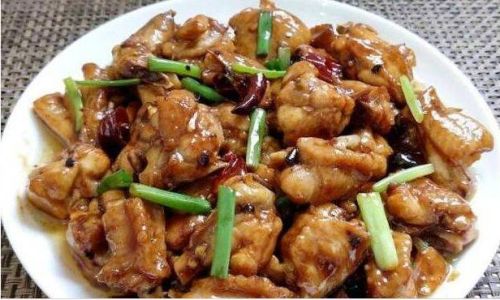
Over centuries, the dish evolved alongside China’s culinary innovations. The introduction of chili peppers from the Americas in the 16th century revolutionized Sichuanese cooking, replacing native spices like Sichuan pepper (huājiāo) as the star ingredient. By the 20th century, Spicy Stir-Fried Chicken Cubes had solidified its place as a working-class favorite, celebrated for its affordability and explosive taste. Today, it transcends borders, appearing on menus from New York to Nairobi, its adaptability allowing chefs to tailor spice levels and ingredients to local tastes.
The Anatomy of Flavor: Ingredients and Their Roles
Creating the perfect Spicy Stir-Fried Chicken Cubes requires a careful selection of ingredients, each contributing to the dish’s symphony of tastes and textures.
The Protein: Chicken Thighs vs. Breasts
While boneless, skinless chicken thighs are traditional for their fat content and tenderness, breasts offer a leaner alternative. The key is uniformity—cubes should measure 1–1.5 inches to ensure even cooking. Marinating the meat in a mixture of soy sauce, Shaoxing wine, and cornstarch tenderizes it while creating a velvety coating that seals in juices during stir-frying.
Aromatics: The Fragrant Trinity
Garlic, ginger, and scallions form the dish’s aromatic backbone. Minced garlic and ginger are sautéed first to release their pungent oils, while sliced scallions add a mild onion sweetness. Some recipes incorporate leeks or shallots for depth, but the classic trio remains unparalleled.
The Heat: Chili Peppers and Sichuan Peppercorns
Dried red chili peppers, preferably the medium-heat Chaotian variety, provide fiery color and intensity. For authentic málà, toast whole Sichuan peppercorns until fragrant, then crush them to release their citrusy, numbing compounds. Adjust quantities based on heat tolerance; a ratio of 10–15 peppers to 1 teaspoon of peppercorns strikes a balance for most palates.
The Sauce: Umami and Complexity
A blend of light soy sauce, oyster sauce, Chinese black vinegar, and sugar creates a glossy, savory-sweet glaze. For depth, some recipes add a touch of doubanjiang (fermented chili bean paste) or hoisin sauce. The sauce should coat the chicken without drowning it, ensuring each bite bursts with flavor.
Vegetables and Garnishes: Texture and Freshness
Bell peppers, onions, or celery add crunch, while water chestnuts or bamboo shoots introduce a refreshing contrast. Toasted sesame seeds or chopped cilantro garnish the dish, enhancing visual appeal and aroma.
Mastering the Technique: Wok Hei and Beyond
The heart of Spicy Stir-Fried Chicken Cubes lies in the cooking technique itself—a marriage of precision and intuition that elevates humble ingredients to gourmet status.
The Wok: A Conductor of Heat
A carbon-steel wok, seasoned to a non-stick finish, is essential. Its rounded base and high, sloping sides distribute heat evenly, allowing ingredients to sear without steaming. Preheat the wok over high heat until droplets of water evaporate instantly—a sign of wok hei (breath of the wok), the smoky, charred flavor that defines stir-fries.
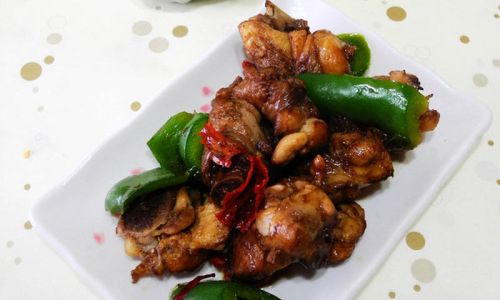
The Dance of Fire and Motion
Stir-frying demands constant movement. Add oil (peanut or vegetable for high smoke points), swirl to coat the wok, then toss in aromatics. Immediately follow with marinated chicken, spreading it in a single layer to sear. Use a spatula to toss and flip, ensuring each cube caramelizes slightly. This rapid cooking—under 5 minutes—preserves the chicken’s tenderness.
Spice Infusion: Timing is Everything
Add chili peppers and Sichuan peppercorns midway through cooking to toast them without burning. Their oils permeate the oil, infusing the dish with layered heat. For milder versions, remove some peppers before serving.
The Final Glaze: Emulsification
Pour the pre-mixed sauce into the wok, stirring vigorously to coat the chicken. The cornstarch from the marinade thickens the sauce into a glossy sheen. Remove from heat immediately to prevent overcooking—a hallmark of expertly executed stir-fries.
Cultural Significance: More Than Just a Meal
Spicy Stir-Fried Chicken Cubes transcends its role as a dish; it is a cultural emblem. In Sichuan, families gather around steaming bowls of the dish, savoring its warmth during damp winters. Street vendors in Chengdu’s night markets serve it as a late-night snack, its aroma mingling with laughter and clinking glasses. Globally, it symbolizes China’s culinary diaspora, adapted yet recognizable in kitchens from London to Los Angeles.
The dish also reflects broader philosophical ideals. The balance of málà mirrors the yin-yang principle—heat and numbness coexisting harmoniously. Its communal preparation, with multiple hands chopping vegetables and tending the wok, embodies guanxi (relationships) and collective effort.
Regional Variations: From Sichuan to the World
While the classic recipe remains revered, regional adaptations showcase the dish’s versatility.
Hunan-Style: Fresh and Ferocious
Hunan province, east of Sichuan, replaces Sichuan peppercorns with fresh chili peppers and fermented black beans. The result is a brighter, more aggressive heat, often paired with pickled vegetables for acidity.
Cantonese Twist: Subtle and Sweet
In Guangzhou, chefs tone down the spice, adding sugar and a splash of rice wine for a caramelized glaze. Vegetables like snow peas or mushrooms dominate, reflecting Cantonese emphasis on freshness.
Global Fusions: A Canvas for Creativity
In the West, cooks experiment with added ingredients: pineapple chunks for sweetness, cashews for crunch, or even a drizzle of honey to temper the heat. Some restaurants serve it over lettuce cups for a low-carb twist, proving the dish’s adaptability.
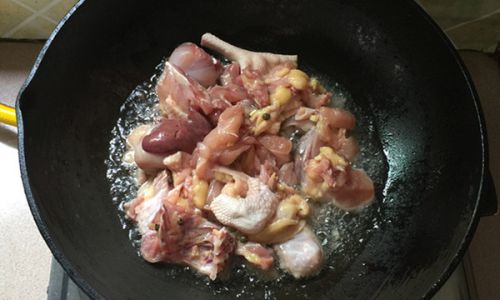
Health and Nutrition: A Guilt-Free Indulgence?
Despite its fiery reputation, Spicy Stir-Fried Chicken Cubes can align with health-conscious diets. Chicken thighs provide lean protein and iron, while vegetables contribute fiber and vitamins. The dish’s quick cooking preserves nutrients, and minimal oil usage (2–3 tablespoons per serving) keeps calories in check. However, moderation is key due to sodium from soy sauce. Opt for low-sodium alternatives or increase vegetable ratios for a lighter version.
Common Pitfalls and How to Avoid Them
Even seasoned cooks stumble with stir-fries. Here’s how to troubleshoot:
Soggy Chicken: Overcrowding the wok steams the meat. Cook in batches if needed, ensuring each cube touches the heat.
Burnt Spices: Add chili peppers after the chicken sears to prevent scorching. Remove the wok from heat if smells turn acrid.
Bland Flavor: Marinate the chicken for at least 30 minutes. Taste and adjust the sauce before adding it—balance is key.
Oily Texture: Use a slotted spoon to drain excess oil after cooking. Pat chicken dry before marinating to prevent sizzling oil splatters.
Serving Suggestions: Elevating the Experience
Pair Spicy Stir-Fried Chicken Cubes with steamed jasmine rice to absorb the sauce, or serve it over egg noodles for a heartier meal. For a low-carb option, wrap it in lettuce leaves with a dollop of hoisin sauce. Complement with a side of stir-fried bok choy or cucumber salad to offset the heat. Beverage pairings include jasmine tea (to cleanse the palate), cold Tsingtao beer, or a crisp Riesling for wine enthusiasts.
Conclusion: A Dish That Ignites the Senses
Spicy Stir-Fried Chicken Cubes is more than a recipe—it’s a cultural artifact, a culinary adventure, and a reminder of the joy found in shared meals. Whether you’re a novice cook or a seasoned chef, mastering this dish offers a gateway to China’s gastronomic heritage. The next time you hear the sizzle of a wok and the crackle of chili peppers, remember: you’re not just cooking—you’re participating in a tradition that has endured for centuries. So grab your apron, ignite the flame, and let the fiery symphony begin. Your taste buds will thank you.
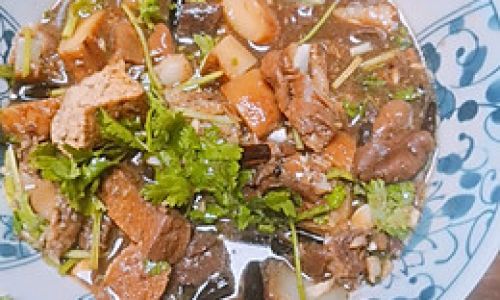
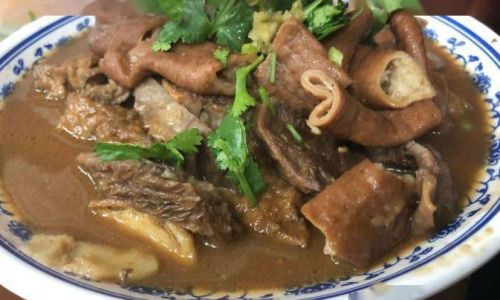
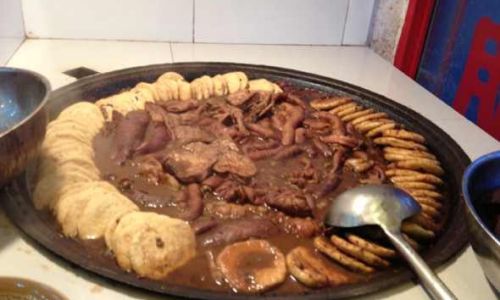
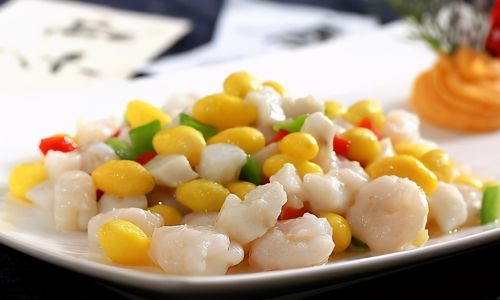
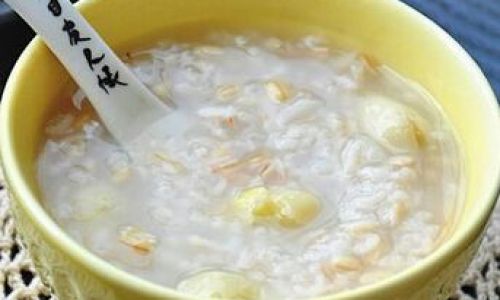
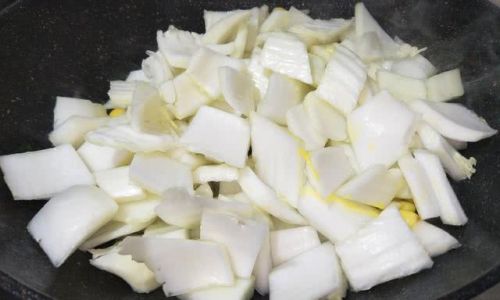
0 comments